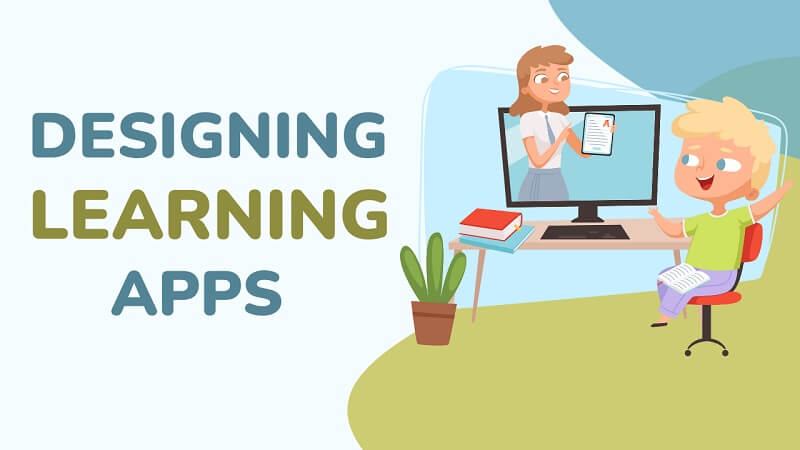
Designing Learning Apps That Inspire: Tips and Tricks for Success
in Technology on September 29, 2023In the ever-evolving world of education, learning apps have emerged as powerful tools to engage learners and facilitate knowledge acquisition. To create learning apps that truly inspire and drive educational excellence, developers must focus on key design principles and user-centric approaches. In this article, we will explore essential tips and tricks for designing learning apps that captivate learners and promote effective education.
Understanding the Learning Environment
Before exploring the design process, it is essential to grasp the context in which these apps will be used. Acknowledging the learning environment and its nuances can have a huge impact on your app’s effectiveness. That’s why choosing the right learning solution is vital.
1. Identify Your Target Audience
Effective learning app design begins with identifying your audience. Are you targeting primary school students, high school learners, or adults seeking professional development? Tailor your app’s content, features, and design to cater to the specific needs and preferences of your chosen demographic.
2. Align with Educational Objectives
Ensure that your learning app aligns with educational objectives and curricula, making it a valuable supplement to classroom learning or an effective standalone educational tool. Collaborating with educators and subject matter experts can help bridge the gap between your app and educational goals.
Creating Engaging and Effective Learning Apps
With a solid understanding of the educational landscape, you can now focus on designing learning apps that inspire and captivate learners.
1. User-Centered Design
At the heart of creating effective and inspiring learning apps lies user-centered design. This approach places the learner’s needs, preferences, and experiences at the forefront of app development. User-centered design seeks to understand the target audience, their learning goals, and the challenges they may face. By empathizing with users and involving them throughout the design process through feedback and usability testing, developers can create intuitive interfaces, personalized experiences, and engaging content that truly resonates with learners. In essence, user-centered design ensures that the learning app is not just a tool for education but also a companion that understands and supports each user’s unique learning journey.
2. Simplify Navigation
A user-friendly interface is key to any successful learning app. Simplify navigation by creating intuitive menus and clear pathways to content and activities. Users should easily find their way through the app with clarity.
3. Engaging Visual Design
Visual design plays a crucial role in captivating users. Use a clean and appealing design that incorporates educational graphics, icons, and imagery relevant to the subject matter. A visually stimulating interface can enhance the overall learning experience.
4. Personalization and Adaptation
Personalization is a powerful tool in learning app design. Incorporate features that adapt to individual learners’ needs, such as personalized learning paths, recommended resources, and adaptive difficulty levels. This approach keeps learners engaged by tailoring the app to their unique learning styles and abilities.
5. Gamification Elements
Introducing gamification elements can make the learning experience more enjoyable and motivational. Consider integrating features like quizzes, challenges, leaderboards, and rewards to encourage active participation and progress tracking.
6. Interactive Learning
Interactivity is a cornerstone of effective learning apps. Include interactive elements such as videos, simulations, and interactive quizzes. These hands-on experiences promote active learning and help users grasp complex concepts more effectively.
Content Creation and Management
The quality and diversity of your app’s content are paramount to its success. Here’s how to approach content creation and management:
1. High-Quality Content
Collaborate with subject matter experts and educators to create accurate, up-to-date, and engaging content. Ensure that the content aligns with educational standards and objectives.
2. Diverse Content Formats
Offer a variety of content formats, including text, images, videos, animations, and interactive exercises. Catering to diverse learning preferences enhances the app’s usability and effectiveness.
3. Regular Updates
Keep the content fresh and up-to-date. Regularly update your app with new lessons, topics, or features to keep users engaged and motivated to continue learning.
Feedback and Assessment
Feedback mechanisms and assessment tools are essential for gauging progress and promoting learning within your app:
1. Immediate Feedback
Provide instant feedback on quizzes and exercises to help users understand their mistakes and learn from them. This approach encourages active learning and self-improvement.
2. Progress Tracking
Implement a progress tracking feature that allows users to monitor their advancement through the app. Visual representations, such as charts and graphs, can make progress data more engaging and informative.
3. Assessments and Quizzes
Create well-designed quizzes and assessments that evaluate users’ understanding of the material. Adaptive assessments can challenge users appropriately based on their performance.
Continuous Improvement
The development of learning apps is an ongoing process. To maintain user engagement and relevance, consider these strategies:
1. User Feedback Integration
Actively seek and incorporate user feedback to make necessary updates and improvements. Users’ insights can help identify areas for enhancement and optimization.
2. Data Analytics
Leverage data analytics to gain insights into user behaviour and learning patterns. This valuable information can inform future updates and content development, making your app more effective and engaging.
3. Stay Ahead of Educational Trends
Keep abreast of the latest educational trends and technological advancements. As education evolves, your app should evolve with it to remain a cutting-edge learning tool.
Conclusion
In conclusion, designing learning apps that inspire and promote effective education is a multifaceted endeavour that requires a deep understanding of the learning environment, user-centred design, engaging visual elements, personalized experiences, and high-quality content. By following these tips and tricks and the use of no-code app development software such as Fliplet, developers can create learning apps that not only captivate learners but also empower them to achieve educational excellence. Ultimately, the success of these apps lies in their ability to inspire a love for learning and promote a lifelong quest for knowledge.
Interesting Related Article: 4 Best Online Learning Tips For Younger Students.

